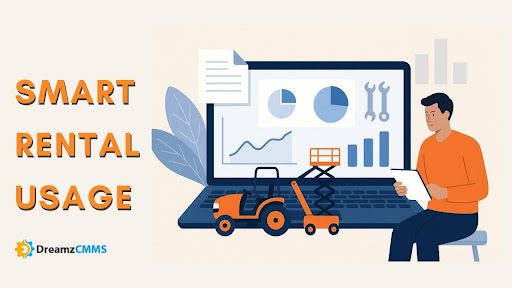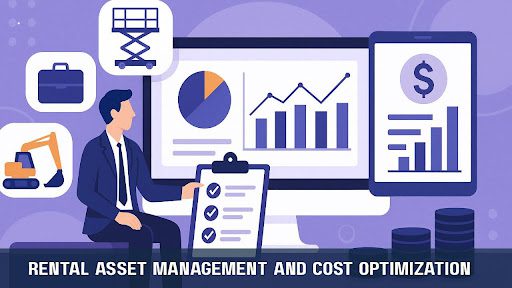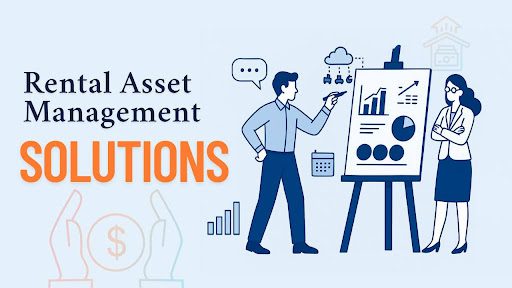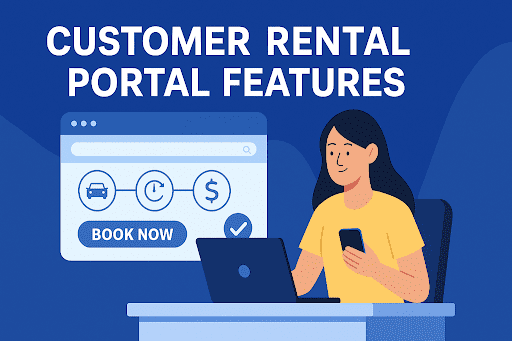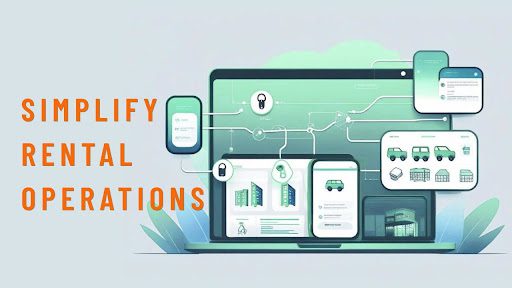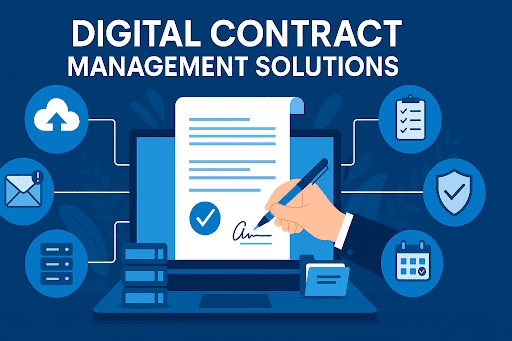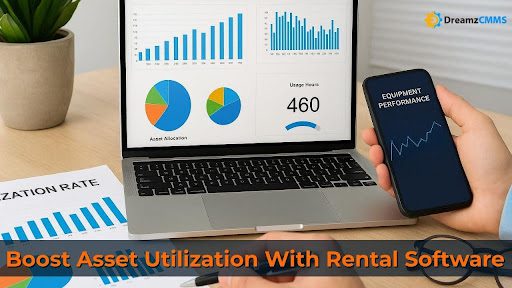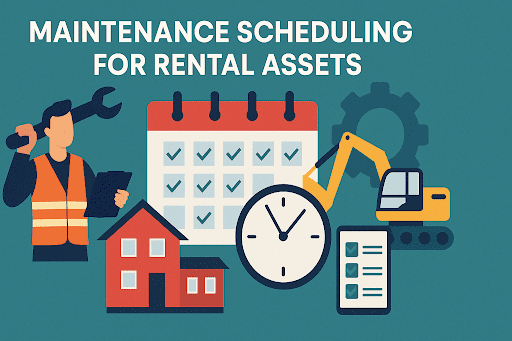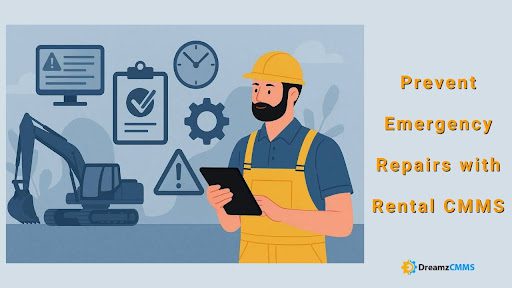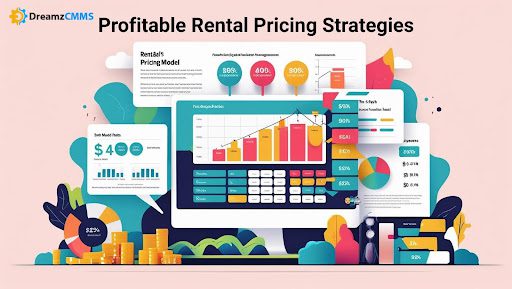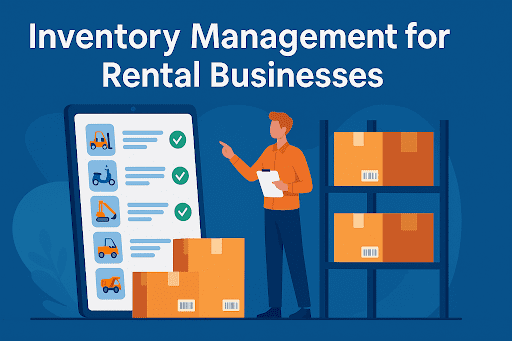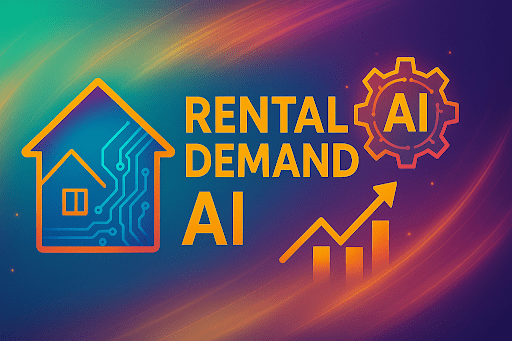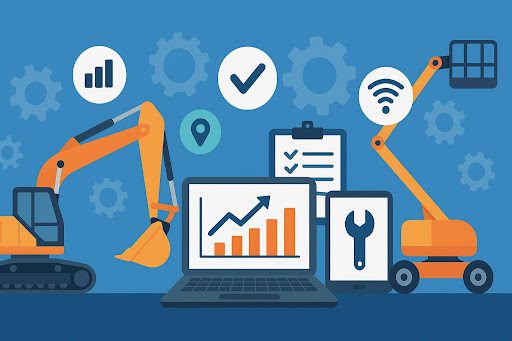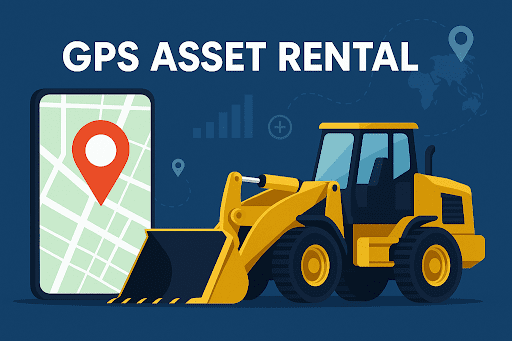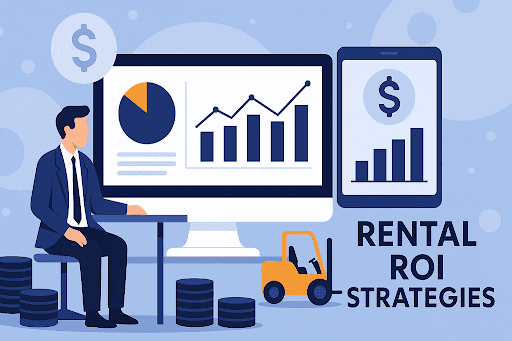 BACK TO Blog
BACK TO Blog
Asset Rental Management
Rental Asset
Industrial operations in today's fast-paced world experience equipment downtime which creates simultaneous losses for production levels and financial performance and customer confidence. Equipment downtime occurs when machinery fails unexpectedly or maintenance operations become delayed and response systems run inefficiently thus disrupting ongoing operations and creating increased expenses. Companies need to
- July 08, 2025
- DreamzCMMS Team
- 10 minutes read
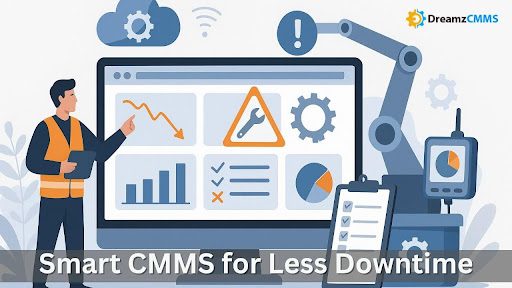
- July 08, 2025
- DreamzCMMS Team
- 10 minutes read
Industrial operations in today's fast-paced world experience equipment downtime which creates simultaneous losses for production levels and financial performance and customer confidence. Equipment downtime occurs when machinery fails unexpectedly or maintenance operations become delayed and response systems run inefficiently thus disrupting ongoing operations and creating increased expenses.
Companies need to invest in systems which allow for quick problem detection alongside prompt repairs and long-term asset wellness to remain competitive. The solution lies in Computerized Maintenance Management Systems (CMMS). This technology group of platforms optimizes maintenance procedures and automates scheduling and provides real-time monitoring of equipment status.
This article explains the ways CMMS tools decrease equipment downtime by examining its root causes together with the financial impacts and CMMS functionality that includes immediate downtime notifications through IoT sensors along with downtime analytics features to enhance your maintenance approach.
Streamline Maintenance with Smart CMMS Tools
A CMMS system enables you to automate work orders and monitor asset performance which helps decrease equipment downtime.
Your facilities can benefit from breakthroughs in maintenance efficiency through forward-looking preventive actions.
Explore Asset Maintenance Management Software
Equipment Downtime Definition
A machine is considered offline during equipment downtime because it stops operating and stops fulfilling its designed purpose. The downtime can be divided into two types.
Planned Downtime
Planned maintenance activities for preventive inspections and part replacements take place during this scheduled downtime period. The stoppage of production during this time helps prevent larger equipment failures.
Unplanned Equipment Downtime
Sudden and serious breakdowns occur from a combination of operational mistakes and equipment deterioration and maintenance abandonment. The lack of production capacity requires immediate repair expenses.
The Sources of Machine Downtime
The initial step to minimize machine downtime requires identifying its root causes. Human mistakes together with process inefficiencies produce most unplanned equipment shutdowns which generate operational losses.
1. Irregular or Missed Maintenance
Machine maintenance that occurs irregularly causes minor problems to evolve into major issues because they remain undetected. Equipment failure becomes more likely when maintenance schedules are ignored.
2. No Preventive Maintenance Schedule
The practice of fixing equipment only after breakdowns occurs leads to repeated system failures. Assets deteriorate more rapidly while performance worsens because preventive strategies remain undefined.
3. Delayed Technician Response
Technicians who lack immediate access combined with unclear work order paths lead to longer repair times. Every extended minute used for response work results in longer downtime periods that produce reduced productivity.
4. Poor Communication Between Departments
Operations and maintenance teams along with inventory teams must maintain proper connection to diagnose and resolve problems efficiently. The absence of clear communication results in service updates being missed and reporting gaps appear.
5. Absence of Equipment Failure Response System
A breakdown in structured reporting and assignment and resolution procedures leads to both unattended and unresolved issues. Such organizational breakdowns result in multiple repeated downtime events.
6. Inadequate Data Collection for Root Cause Analysis
The failure to track and analyze equipment breakdown data prevents the resolution of repeated problems. When maintenance teams lack access to historical data they tend to maintain their outdated approaches thus creating operational inefficiencies and elevated expenses.
The causes mentioned above can be actively prevented through the implementation of a single centralized CMMS system for downtime prevention. CMMS platforms provide automation and scheduling tools and real-time monitoring and reporting features that help teams eliminate downtime causes.
Downtime is Expensive: Here's Why
The cost of equipment downtime often goes far beyond immediate repair bills. A single downtime event can have a ripple effect across operations, customer relationships, and profitability. Here's how:
1. Halted Production
The failure of equipment leads to a complete shutdown of entire production facilities. The failure of equipment results in decreased daily manufacturing output which disrupts production schedules for multiple days up to several weeks.
2. Missed Customer Deadlines
Equipment downtime causes manufacturing and service delivery delays that result in unmet delivery obligations for customers. Such delays destroy customer faith which may produce permanent business loss
3. Increased Overtime Labor
Companies must schedule overtime work to recover lost time. Additional costs from overtime work and employee fatigue create further efficiency problems.
4. Emergency Shipping of Parts
Businesses that experience unplanned downtime need to speed up their spare parts procurement process. The high shipping costs of expedited delivery fail to prevent delays in the repair process.
5. SLA Violations and Penalties
Downtime incidents cause business organizations to fail in their Service Level Agreement (SLA) obligations to their clients. Financial penalties combined with negative impacts on future vendor partnerships and contract extensions become the result of downtime.
Using a downtime cost calculator allows businesses to determine their losses during each minute and hour of operation. The downtime of equipment in automotive and pharmaceutical industries results in hourly expenses ranging from thousands to tens of thousands of dollars.
How CMMS Tools Help Reduce Equipment Downtime
A CMMS platform provides simple maintenance operations while offering complete visibility into asset conditions. A CMMS platform provides multiple ways to decrease equipment downtime from manufacturing through its entire life cycle.
1. Preventive Maintenance Scheduling
A CMMS system enables organizations to schedule and track preventive maintenance (PM) operations. The system uses time-based assignments as well as usage records and sensor signals to perform automatic task distribution.
Benefits:
- Eliminates guesswork
- Reduces emergency repairs
- Improves long-term asset health
- Minimizes maintenance-related downtime
2. Downtime Tracking Software
A CMMS operates as a superior downtime tracking software that records all incident details including root causes and resolution times along with incident durations. The system enables the analysis of failure patterns.
Benefits:
- Create detailed downtime logs
- Review asset failure history
- Build performance benchmarks
- Populate the downtime reporting dashboard!
3. Real-Time Downtime Alerts
The current generation of CMMS platforms establishes connections with IoT sensors to detect equipment downtime. The sensors keep track of equipment states to detect deviations which trigger immediate real-time alerts.
Impact:
- Enables early issue detection
- Prevents critical system failures
- The immediate response capability through this system leads to shorter equipment downtime periods.
4. Breakdown Tracking System
CMMS tools include a breakdown tracking system that enables automated maintenance workflow management. After receiving an issue report the system performs the following sequence:
- Logs the breakdown
- Assigns a technician
- Tracks resolution time
- Updates asset history
The equipment failure response process becomes more efficient.
5. Asset Performance Monitoring
CMMS tools provide powerful asset performance monitoring by integrating with IoT and sensor data. Real-time visibility of usage patterns together with wear indicators and predictive analytics is made possible through this system.
Result:
- Better decision-making
- Identifies underperforming assets
- Extends machine lifespan
6. Spare Parts & Inventory Management
Delays in operations typically stem from insufficient availability of spare parts. CMMS tracks inventory levels automatically while sending low stock alerts which trigger reorder requests.
Advantages:
- No last-minute procurement
- Avoids downtime from part unavailability
- Reduces costs from overstocking
7. Mobile CMMS Access for Field Technicians
Technicians who use CMMS mobile applications gain access to maintenance records and work order completion tools with real-time progress updates.
Benefits:
- Faster field service response
- Remote issue diagnosis
- Field productivity improves through this system which shortens production downtime.
8. Downtime Reporting Dashboards
The centralized downtime reporting dashboard presents visual reports together with real-time charts and historical comparisons which help stakeholders make better asset strategy decisions.
Dashboard Insights:
- Live alerts and failures
- Weekly/monthly downtime stats
- Technician performance analytics
- Spare part usage trends
9. Integration with Rental Equipment Operations
When managing equipment rentals the occurrence of downtime negatively affects both customer satisfaction and revenue levels. A CMMS connected to Asset Rental Management Software provides:
- Equipment usage logs
- Predictive maintenance alerts
- Damage tracking
- Automated billing adjustments for downtime
For an exact evaluation of Rental Costs with Rental Asset Management Software review the Rental Costs section to learn about effective cost management methods.
CMMS + IoT + Predictive Maintenance = Zero Downtime Goal
Advanced CMMS platforms incorporating IoT sensors for downtime detection and AI analytics with real-time alert systems enable companies to:
- Predict failures before they occur
- Trigger preventive work orders
- Reduce the volume of emergency repairs
- Lower maintenance costs
These advanced systems represent the future of CMMS for downtime prevention which enables organizations to achieve near-zero unplanned downtime in industrial settings.
The dedicated guide on Maximizing ROI on Rental Equipment explains uptime-driven profitability in detail.
Common Mistakes to Avoid
- Waiting for failure to occur results in higher maintenance expenses.
- Delaying response to anomalies worsens downtime when you do not act on alerts.
- Overlooking analytics: Ignoring the downtime reporting dashboard leaves blind spots.
- No technician training: A CMMS is only effective if users are trained.
- Disorganized spare parts inventory: Leads to avoidable delays in repair.
Best Practices for Reducing Equipment Downtime
Organizations need to unite smart maintenance approaches with contemporary CMMS systems to effectively minimize equipment downtime. The following proven best practices exist:
| Strategy | Description |
| Schedule preventive maintenance | Organizations can use CMMS to create recurring maintenance tasks which detect problems at an early stage. Scheduled inspections and maintenance activities help organizations prevent unexpected failures and extend their asset operational life. |
| Monitor real-time alerts | The integration of IoT sensors with CMMS enables permanent monitoring of assets. You should take prompt action against real-time downtime alerts because this approach minimizes service interruptions and stops equipment failures from occurring. |
| Analyze reports monthly | The built-in downtime analysis tools and CMMS dashboards allow organizations to identify failure patterns. Through regular reporting teams can improve their scheduling methods while detecting repeated problems to enhance operational workflows. |
| Track asset performance | CMMS users can enable asset performance monitoring to track essential KPIs including MTTR and MTBF. Data-driven maintenance decisions become possible through this system while it provides better planning capabilities for capital investments. |
| Maintain parts inventory | Your CMMS requires essential spare parts to be both stocked and updated. The tracking of inventory through automation prevents repair delays because it detects when components are out of stock or missing. |
| Integrate rental asset tracking | Using CMMS with Asset Rental Management Software enables organizations to track rental equipment usage together with maintenance requirements and current availability. The system reduces downtime and enhances billing precision to prevent SLA violations. |
Real-Life Success Stories
Manufacturing Firm
A worldwide manufacturing organization implemented CMMS for predictive maintenance and real-time alert systems which resulted in a 43% decrease of unplanned equipment downtime within half a year.
Construction Company
A heavy equipment rental company implemented Asset Rental Management Software with CMMS to achieve better control of their asset servicing operations. The improvement of maintenance tracking together with proactive work order generation enabled significant reductions in both unplanned downtime and billing errors.
Rental businesses can better plan through predictive maintenance according to our Rental Asset Management Software Cost blog.
Healthcare Sector
Medical device maintenance tracking was implemented through CMMS by a hospital chain. Their downtime reporting dashboard revealed a 52% enhancement in asset availability throughout the course of one year.
Final Thoughts: Reducing Equipment Downtime is a Smart Investment
Equipment breakdowns stop production but they simultaneously destroy profits while affecting customers while stressing your operational teams. Modern CMMS platforms enable businesses to automate maintenance operations and decrease unplanned failures while improving asset reliability.
The combination of downtime tracking software and real-time downtime alerts with asset performance monitoring and downtime analysis tools within CMMS enables organizations to transition from firefighting to performance management.
Optimize Maintenance. Minimize Downtime.
Discover how DreamzCMMS can transform your maintenance operations with automation, real-time alerts, and intelligent asset tracking.
Start your journey toward maximum equipment uptime and operational efficiency today.
Ready for More?
Talk to one of our CMMS experts and see how DreamzCMMS can simplify your maintenance operations.
Book a free consultation
